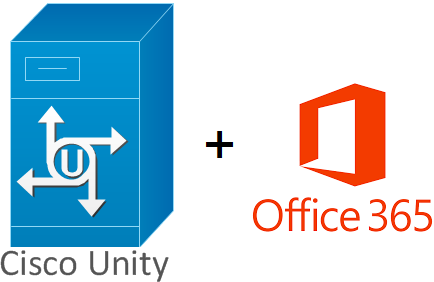Happy New Year everyone! I’ve had a nice break from work and the blog over the holidays and I’m now back. This year I have several key projects that I will be leading (and hopefully posting about here on the insecurewire.com). One of them is to merge and migrate our Cisco Voice environment. Late last year I started the inital build; Cisco Call Manager 12.5 and Cisco Unity Connection 12.5. One feature that I was asked for was unified messaging, specifically integrating Cisco Unity Connection (12.5.1.13900-35) with Office 365. To my surprise the integration between Unity and 365 was relatively easy. The biggest issue I found was deciphering what the error messages on the Cisco side (RTMT) actually meant.
Here’s how to do it:
1. Have your AD / Azure admin create a service account for integration with Office 365. The user must have the ApplicationImpersonation role. Make sure the user is not enforced for MFA or has to change password at first logon (I had that issue and trace logs on the Cisco side did not match that my service account required a password change at logon!).
2. Login to Cisco Unity Connection Admin tool. Unified Messaging > Unified Messaging Services >
Type – Select Office 365
Display Name – Office 365
Web-Based Authentication Mode – Basic
Set the proxy (if you use one, this does work – address:port)
Active Directory DNS Domain Name – outlook.office365.com
Account Used to Access Exchange:
username@domain.onmicrosoft.com (use your 365 supplied microsoft domain here)
Service Capabilities – tick Access Exchange Calendar and Contacts, Synchronize Connection and Exchange Mailboxes.
3. Press save and then test. Unity will do a test connection using DNS to autodiscover exchange online (Office 365). It’s important to note that your Unity setup should have DNS enabled for this to work.


4. Now its time to Enable UM by going to Class Of Service > Class of Service > Edit the Voice Mail User COS (the default CoS) > Check the box ‘Allow Users to Access Voicemail using an IMAP Client and/or Single Inbox’ as shown below:

5. Now link the UM service like so: Templates > User Templates > Select your default User Template > Edit > Unified Messaging Accounts > Add New > Select the UM Service we created in step 2. If you want to add UM to accounts manually this can be done via Users > Users selecting a user > Edit > Unified Messaging Accounts.
Be aware that Unity 12.5 is licensed via the Cisco Smart Account and as such you will need the correct quantity of licenses for the Basic UM service to work (System Settings > Licenses). More information on the integration process can be found here. Note, the Cisco documentation has not been updated for 12.5 so some of the screenshots are missing the newer options.

Comments